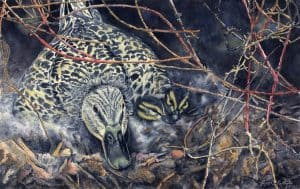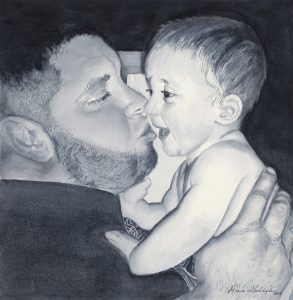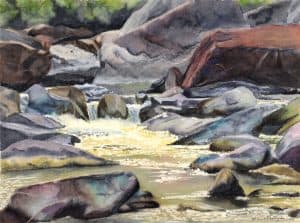Competing in Art Shows and Exhibits
Jumping into talking about competing in art shows and exhibits as just the third blog seems sudden in the chronological order of things, but it is timely. I just recently submitted three paintings, which is the max allowed, in the Professional Division of Fine Arts, for the Western Idaho State Fair.
In some states, fine art professionals don’t submit their work in state fairs, but here in Boise, they do. This competition is entered by most, if not all, of the watercolor professional artists I know. As with any competition, judging is by an artist, and for the state fair, it is a local artist. But, why enter any competition and subject yourself to the scrutiny of another artist who may paint in a completely different style than you?
In the beginning . . . I didn’t enter competitions. It was not only scary to subject myself (yes it felt like me and not my painting) to the opinion of someone I may not meet or will most likely not see again, but also stressful in making sure I followed the prospectus – competition rules and guidelines – correctly. There’s also the logistics of getting my painting or paintings to the show safely and on time. How am I going to carry them or transport them? In the past I’ve used this type of art portfolio or used a small luggage cart, but neither one works well if you have several paintings of considerable size. I just purchased this Vergo S300BT Model Industrial Folding Hand Truck Dolley and I’m looking forward to picking up my paintings with it. I’ve seen several local artists with this type and they all seem happy. The right tools for the job, right?
Back to art competition. I talked about the main disadvantages, but as in having the right tool for the transporting, that negative is no longer there. What about the fear and anxiety of the results, and wondering if you’ll get a ribbon or not. It doesn’t always happen. Putting yourself “out there” is what’s important. If you don’t get a ribbon it’s ok. Always remember that you’re not always going to win, the judge most likely has a different style and different taste and will pick another person’s painting over yours, even if you personally don’t like the winning painting. As simply put by Neil Gaiman in “Art Matters”, if you create something for the sake of earning a prize or making money and you don’t get a prize or sell it, you’re left with something that you don’t like. But, if you make something because you like it and it doesn’t get a prize or sell, then you’re left with something that you love! You got into the business of painting because it’s something that you like and if you work at something that you like, then you’ll never work a day in your life! Each time you enter a competition you become more attune to the benefits of it, the exposure of your work (the free marketing), the strength you obtain from surviving the stress of it. Face it, you didn’t die, you may have felt like you were, but you didn’t.
Now for the results of judging!
“Daddy’s Home!”, Honorable Mention
“Virgin of Zion”
“Under the Brambles”, Honorable Mention




Recent Comments